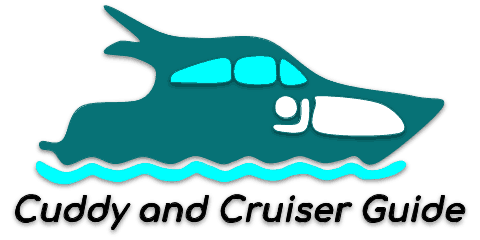Are you new to boating and were told to make sure to have your outboard under water before working on it or staring it?
It’s a common question to wonder why exactly you need water in order to run a boat motor.
An outboard motor needs water in order to lubricate the water pump which supplies water to also cool the engine. Running an outboard without water will quickly destroy your water pump and the engine itself.
We’ll try to keep this short and sweet as we cover why you need water and what will happen if you run an outboard without it.
Why an Outboard Boat Motor Needs Water
Water protects your outboard motor in two key ways:
- It lubricates the water pump
- It cools the power head of the engine
Your outboard’s water pump is an aluminum housing with a rotating rubber disk inside with fan-like vanes that push water like a fan blade. Without water, the rubber disk on the aluminum housing will have a lot of friction, and when you consider how quickly it spins it will heat up extremely fast.
After you stop your outboard, much of the silt, sand, and salt will settle in the water pump which is the lowest point of your outboard. Without new water coming in through the intake vents, the water pump will not only have friction from the rubber against the aluminum, it will also have the added friction of the debris within the housing itself.
Without a source of water coming into the water pump for lubrication, you can damage to the point of needing to be replaced within seconds of operation.
The engine is a little hardier but not for long. You might be able to get a couple minutes out of it, assuming you removed the lower leg of the outboard that houses the water pump.
The engine — especially the cylinder head — is supplied water from the water pump and is regulated by a thermostat to maintain enough new cold water to keep the temperature at the proper operating temp for the most efficient combustion.
Without the water, the engine will heat up quickly (especially being covered by the cowling, or cover) and the oil that is supposed to lubricate the moving parts will lose its lubricating properties through excessive heat. This will cause wear on your cylinder walls, damage your piston rings, blow a head gasket, or seize up altogether.
Does an Outboard Motor Need to be in the Water to Start?
An outboard motor does not necessarily need to be in the water to start, but it does need an ample water source at the inlet screens for the water pump in order to not burn out. This can often be supplied with a drum full of water or a hose with muffs.
Considering the thousands of dollars it can take to repair or replace an outboard motor, investing in something as cheap and as portable as these outboard motor inlet vent muffs on Amazon is a no-brainer when it comes to running your engine at home for repair or flushing purposes.
Just make sure that the muffs that you choose are the right dimensions and shape for your particular outboard.
You simply hook a hose to them, slide them over your inlet screens for your water pump, and turn the hose on.
They can be a pain to get on sometimes due to the friction between the muffs and the bottom leg of the motor, so you can use water to lubricate the process. Also, make sure the water is streaming through the indicator or tell tale hole within seconds after starting the engine. If you don’t, stop the engine and re-check your seal with the muffs.
Can I Hook Up a Hose to Designated Point on the Top Half of the Outboard and Run It?
The designated hose connection point on the top half of the outboard, often where the tell tale or indicator hole is, is meant to flush your outboard but in reverse. It actually is a backwash and with the water flowing in the opposite direction you should not start your outboard.
The two proper ways to operate your outboard motor outside of the water are to place the lower half of the unit in a drum (trash bin) full of water or to use a hose with the muffs.
